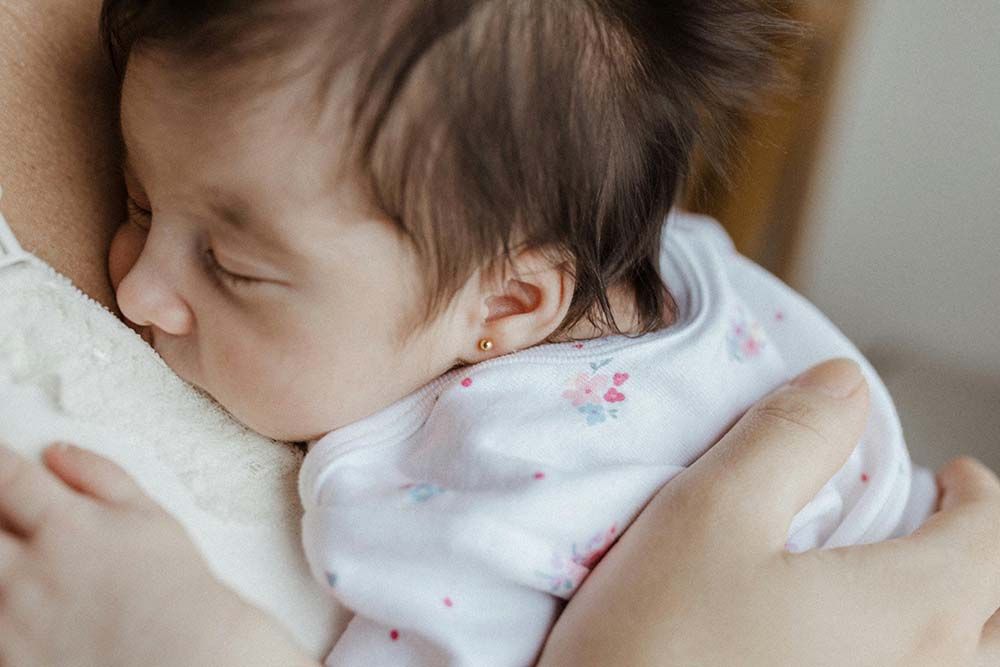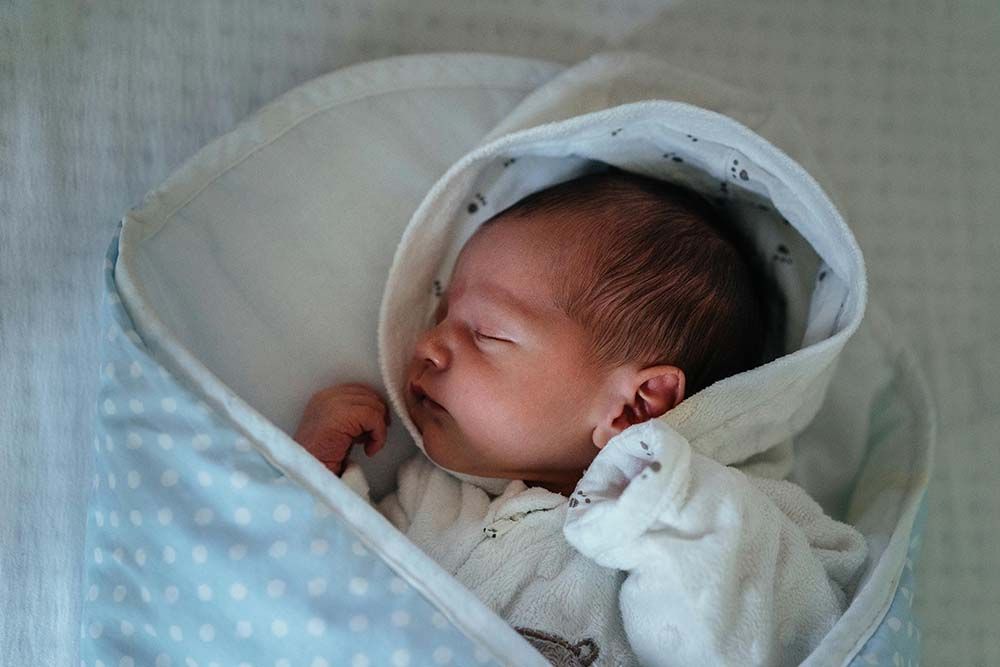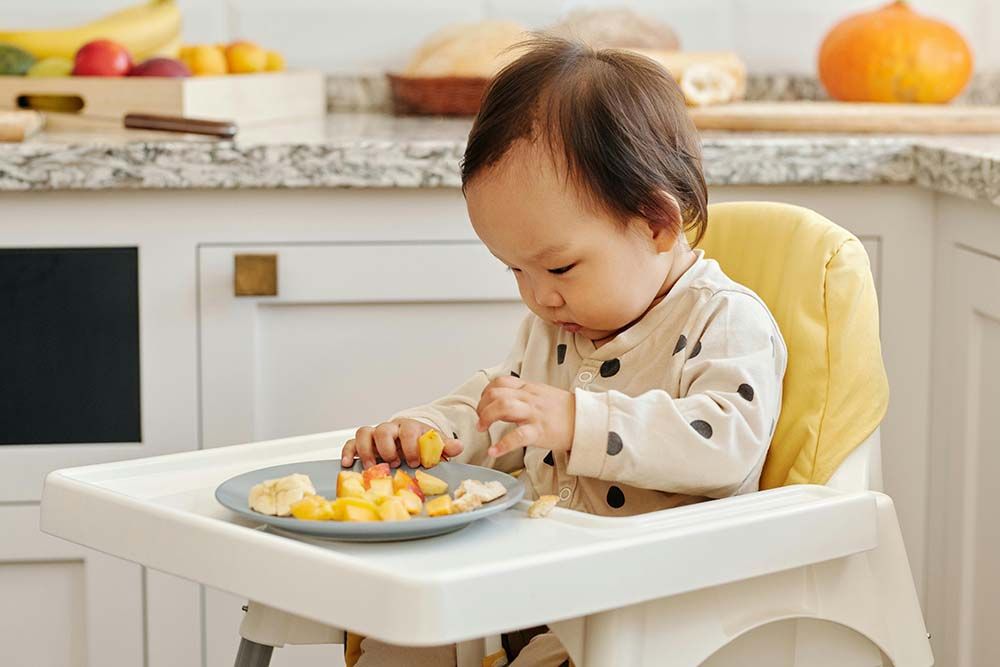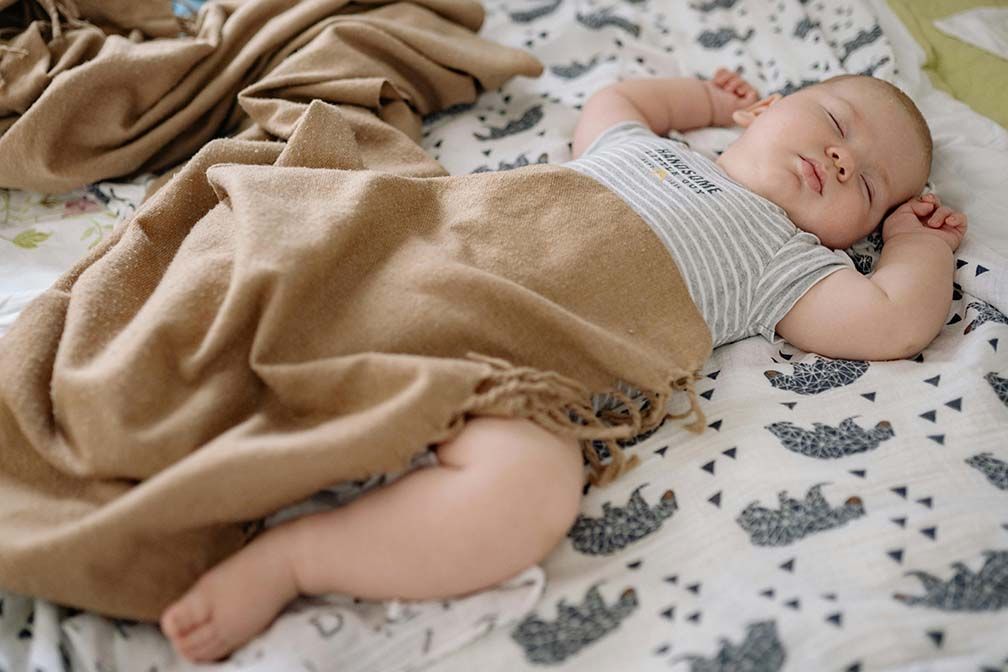

Side sleeping is a common sleep position for adults. But, can newborns sleep on their side? Many new parents are eager to know the answer. If you are interested in this question too, welcome to read this article, which will show you a comprehensive understanding about it.
IN THIS ARTICLE:
Can newborns sleep on their side?
Risks of newborns sleep on their side
How to handle baby sleep on side during sleeping?
How to stop infants sleeping on side?
When can newborns sleep on their side?
What is Side Sleeping?
Side sleeping refers to the position where a person's body is tilted to one side during sleep. When lying on the side, one side of the body is facing downwards and the other side is facing upwards.
The legs can be straight or bent, and the arms can be placed on either side or in front of the body. Side sleeping is a common sleeping position that is favored by many people due to its natural and comfortable nature.
Benefits:
- Reduce acid reflux, especially good for people with gastroesophageal reflux disease (GERD)
- Help blood flow back to the heart, which can improve heart health.
- Relieve pressure or pain on their back and joints.
- Promote better breathing and reduce snoring
- Promote maternal health, especially in the later stages of pregnancy
- Improve sleep quality and make it easier to fall into a deep sleep
Can Newborns Sleep on Their Side?
Definitely no. According to the current medical advice and research, it is not safe for newborns to sleep on their side.
0-3 months:
The baby's neck muscles are weak and cannot control the head well. Lying on the side may cause respiratory obstruction when the head rotates. Besides, babies do not yet have the ability to turn over independently, and lying on their side can easily cause them to turn over to a prone position, increasing the risk of SIDS
4-6 months:
Even if the baby begins to develop stronger neck control and turning ability, it is still not enough to completely avoid the risk of turning into a prone position, thereby increasing the risk of SIDS.
6-12 months:
At this time, even if the baby is able to turn over on their own, it is still necessary to ensure a safe sleeping environment and avoid using soft bedding, pillows, plush toys, etc. to reduce the risk of suffocation.
Are there any Signs that Babies are Ready for Turning Over?
Leg kicking: Babies may frequently kick their legs, which is not only a way to explore their surroundings, but also to practice the leg strength required for turning over.
Enhanced tummy time adaptability: Babies are more flexible during their tummy time, able to lift their heads and maintain them for a period of time, demonstrating strong neck control ability.
Hand exploration: Babies begin to explore their surroundings with both hands, indicating that they are developing more coordination skills.
Body twisting: The baby may twist their body and try to change their position while lying down.
Coordinated movements of arms and legs: The baby begins to make coordinated movements with their arms and legs to prepare for turning over.
Why Can't Newborns Sleep on Their Side?
Easy to switch to prone position: Newborns are easy to turn over to prone position when sleeping on their side, which increases the risk of SIDS.
Risk of suffocation: Side sleep may cause the baby's head to be covered, increasing the risk of suffocation. Besides, soft bedding or toys may hinder a baby's breathing.
Low security: Compared to sleeping on the back, the safety of lying on the side is lower because it increases the possibility of the baby turning over and becoming prone.
Head shape issue: Long term lateral lying may lead to uneven shape of the baby's head, although this situation is relatively rare.
Increased discomfort: The neck muscles of newborns are not fully developed, and lying on the side may cause frequent turning or discomfort at night, affecting the quality of sleep.
What to do if Infants Sleep on their Side During Sleeping?
There’s one more thing that needs to mention before starting this topic. When you see your newborn curled up on his side after being placed, it may be a “newborn curl” phenomenon actually, which is the position when babies are in their mothers’ womb.
If you have noticed that your newborn sleeps on side during sleeping, the first step is to ensure a safe sleeping environment, including removing all soft objects, using a safe mattress, keeping the bed clean, monitoring room temperature, and avoiding shared beds. Secondly, observe the baby's posture after turning over and gently adjust him back to a supine position, but try not to disturb his sleep. Finally, regularly check the baby's sleeping position and safety condition at night to ensure that he can fall asleep safely. If you have any concerns, you can consult a pediatrician for professional advice.
How to Stop Baby Sleeping on Side?
Ensure back sleeping position: Ensure that the baby falls asleep on their back every time. You can gently place him in a supine position when he falls asleep.
Use a suitable mattress: Choose a sturdy baby mattress and avoid a mattress that is too soft, which can reduce the possibility of the baby turning over.
Restricted space: Using appropriate bed frames or baby sleeping bags can limit the baby's range of motion and reduce their chances of turning over.
Monitor sleeping posture: Regularly check the baby's sleeping posture to ensure that they remain in a supine position. If he flips over, gently adjust it back.
Avoid overheating: Keep the indoor temperature appropriate and avoid wearing too much clothing to prevent the baby from feeling uncomfortable and turning over.
Try a baby sleeping sack: Using a baby sleeping sack to replace a blanket can keep the baby warm and avoid the risk of being covered by the loose blanket. Also, it can limit baby’s behavior in some extent, preventing from turning over.
Develop a regular sleep routine: Help babies establish a good sleep routine and reduce the frequency of waking up and turning over at night.
When Can a Newborn Sleep on Their Side?
To be honest, there is no fixed answer to define which age is suitable for babies to start side sleeping. Although babies at 6 months are usually able to turn over on their own, they haven’t fully mastered it and may cannot turner back, putting babies into the risk of suffocation. Thus, for the sake of safety, it is recommended to allow babies to sleep on their side until they are over 12 months. This precaution is to minimize the risk associated with immature developed motor skills.
Extra Tips for Safe Sleep
Ensure a safe sleeping environment:
Use a sturdy mattress that is suitable for the size of the baby crib, ensuring that there is no gap between the mattress and the bed. Keep the bed neat and remove all loose items, pillows, plush toys, etc. to reduce the risk of suffocation.
Maintain air circulation:
Ensure good air circulation in the baby's sleeping environment and avoid overly enclosed spaces.
Avoid using overly tight wrapping:
Although wrapping can help babies feel safe and reduce startle reflexes, it is important to ensure that the wrapping is not too tight to limit their breathing or movement.
Regularly inspect mattresses and bed rails:
Regularly check whether the mattress of the baby crib is worn or damaged, and ensure that the bed rails are firm and not loose, to prevent the baby from pinching their hands and feet.
Reasonably arrange sleep time:
Try to let your baby fall asleep at the same time and establish regular sleep habits, which will help your baby's physical and mental health.
Avoid using electronic devices:
Avoiding the use of electronic devices within an hour before bedtime can reduce the impact of blue light on babies and help them fall asleep faster.
Comfort before bedtime:
Providing a quiet and warm environment for your baby before bedtime can help them relax through gentle music, lullabies, or storytelling.
Suitable room temperature:
Maintain an appropriate indoor temperature and avoid overheating, as overheating can increase the risk of SIDS. It is generally recommended that the indoor temperature be between 16-20 ° C (60-68 ° F).
Reasonable dressing:
Dress appropriately according to room temperature to avoid the baby getting too hot or too cold. You can touch the back of the baby's neck with your hand to determine if the baby is dressed properly.
Avoid shared beds:
It is best for newborns to sleep alone in their own crib and avoid sharing beds with parents to reduce the risk of accidental compression injuries.
Extend: What Sleep Position is Recommended for Newborns?
If sleeping on one’s side is not recommended for newborns, then what kind of sleep position is suitable? Of course, it is back sleeping. As the name shows, it refers to one sleeps lying flat on one’s back, which contains multiple potential advantages as the following lists.
Reduce the risk of SIDS:
Numerous studies have shown that sleeping on the back can significantly reduce the risk of SIDS (sudden infant death syndrome). It is also strongly recommended by the American Academy of Pediatrics (AAP) as the safest sleeping position.
Easy to breathe:
Sleeping on the back helps to keep the respiratory tract clear and reduce the risk of suffocation. Babies' respiratory tract is not easily blocked by their tongue or other objects when sleeping on their backs.
Spinal health:
Sleeping on the back can reduce pressure on the baby's back and joints, help maintain the natural curvature of the baby's spine, and promote good physical development.
Convenient monitoring:
When the baby sleeps on their back, parents can more easily observe the baby's condition and promptly detect any abnormal situations.
Promote facial symmetry:
Compared to sleeping on the side, sleeping on the back can reduce the asymmetry caused by prolonged compression of the baby's face on the pillow.
Reduce snoring:
For some babies, sleeping on their backs can reduce airway obstruction, thereby reducing snoring.
Conclusion
There are three common sleep positions, including side sleeping, back sleeping and stomach sleeping. And currently, back sleeping is recognized as the safest sleeping position. As for side sleeping, it is not recommended for a newborn under 12 months, even with supervision. With the growth of babies, side sleeping will be a natural choice. But before that, the most important thing is to ensure baby’s safety.























